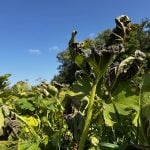Rural poverty is more pervasive than a decade ago and there is less help from national safety net programs, senators heard last week at hearings into rural poverty.
“There is no boom in rural areas anymore,” Debbie Frost, president of the board of the National Anti-Poverty Organization, told the Senate agriculture committee Sept. 28. “People are leaving. Towns are becoming ghost towns. For Saskatchewan, it is a lack of everything in rural areas.”
NAPO leaders also argued that it can be difficult for poor farm families because their plight is often not acknowledged. Even their neighbours sometimes are skeptical.
Read Also

Trade war may create Canadian economic opportunities
Canada’s current tariff woes could open chances for long-term economic growth and a stronger Canadian economy, consultant says — It’s happened before.
“The perception is that farmers are better off than other people in rural Canada because they own land and can grow their own food,” said Nancy Shular, an Ontario board member. “I don’t believe that is the case but I know that perception is out there.”
Liberal senator Jim Munson said Canadians’ views of poverty often are urban-centric because a walk through any city downtown provides encounters with beggars and the homeless.
“We don’t see a farmer sitting at the end of his laneway saying, ‘can you spare a dime?’ but we do see that in the city,” he said.
Alberta Liberal Joyce Fairbairn said she was shocked during summer travels in southeastern Alberta to see food banks in a number of small towns.
“But I know the last two years have been the worst years for farm income in history,” she said.
The Senate rural poverty study, which was started at the urging of Conservative senator Hugh Segal, will feature hearings in Ottawa through the autumn. In the new year, the committee plans hearings in rural areas and small towns across the country.
Segal said Statistics Canada has estimated that as many as 40 percent of rural Canadians live below the low income cut-off line.
“I think that (estimate) is low,” said Shular.
However, at an Oct. 5 hearing, senior Statistics Canada officials said the actual number is between six and eight percent.
But income statistics director Sylvie Michaud said that should not be mistaken as the agency’s estimate of rural poverty levels because poverty involves more than an income measurement. Services, living costs and other factors could be involved.
NAPO executive director Sherrie Tingley said the plight of the poor is worse than it was a decade ago because welfare programs have been weakened and shrunk. Until 1995, Ottawa used the Canadian Assistance Plan to encourage provinces to maintain strong welfare programs. For every $1 a province spent, Ottawa added $1.
In his 1995 deficit-cutting budget, then-finance minister Paul Martin killed the CAP and reduced transfers to the provinces. The NAPO leaders said in the competition for dollars, welfare programs usually lose out to health care and education.
At the same time, the Employment Insurance program for the unemployed was sharply cut and the rules changed to make many of the unemployed ineligible for EI help.
Tingley said it means that while Canadian poverty once was cyclical with a safety net strong enough to often propel the newly poor back into economic self-sufficiency, the new rules have created a poverty trap that is difficult to escape.
Welfare recipients are often forced to sell assets to qualify, which usually makes it impossible for rural residents on welfare to own a car. That reduces their ability to find or hold a job.














